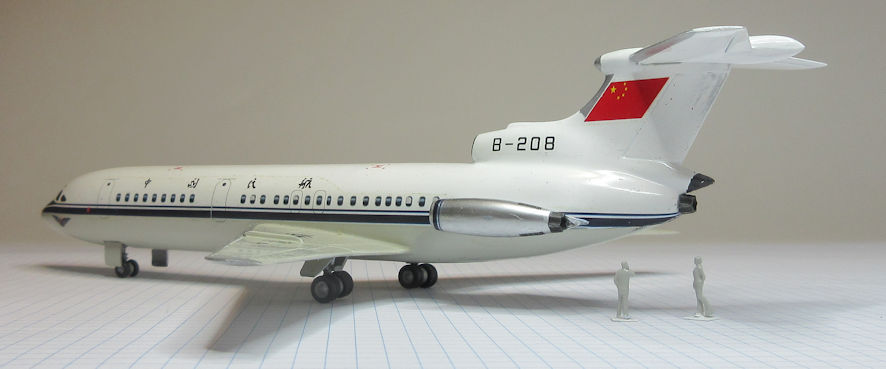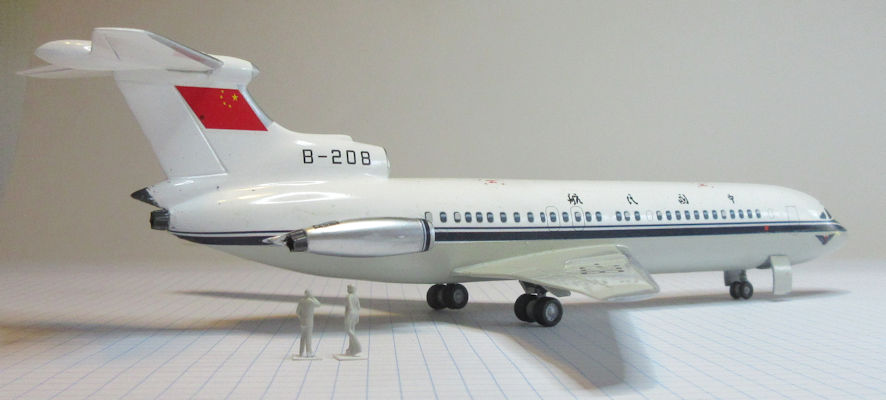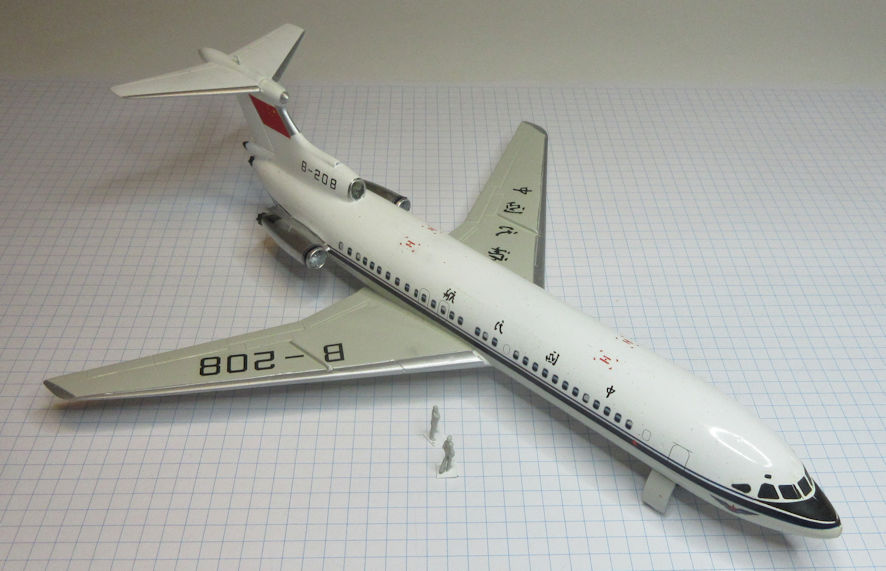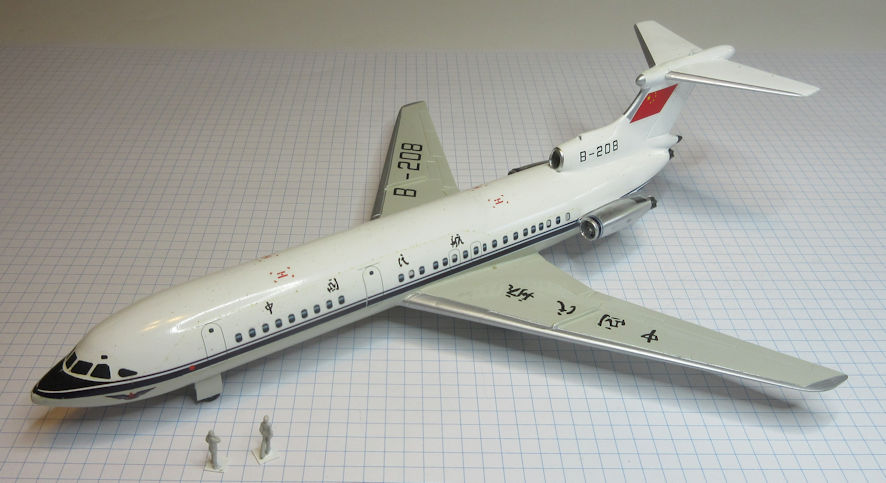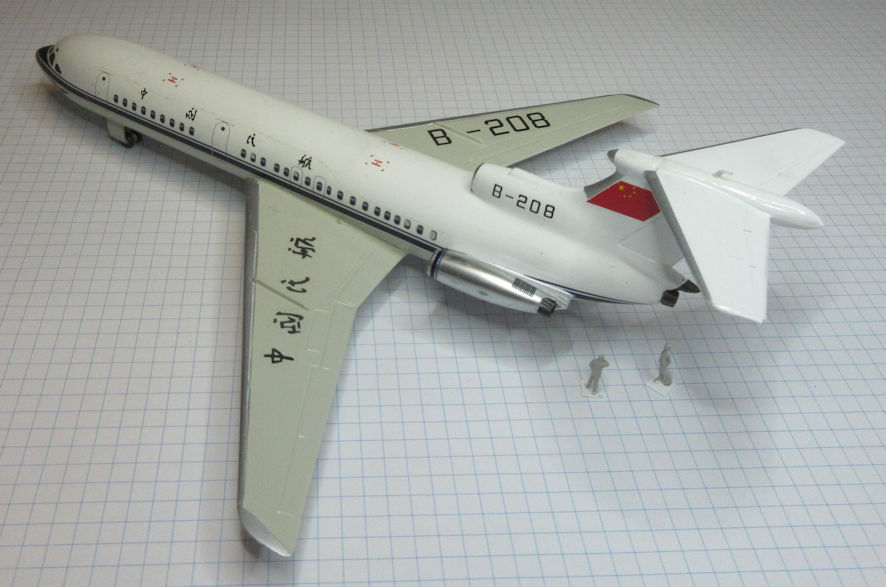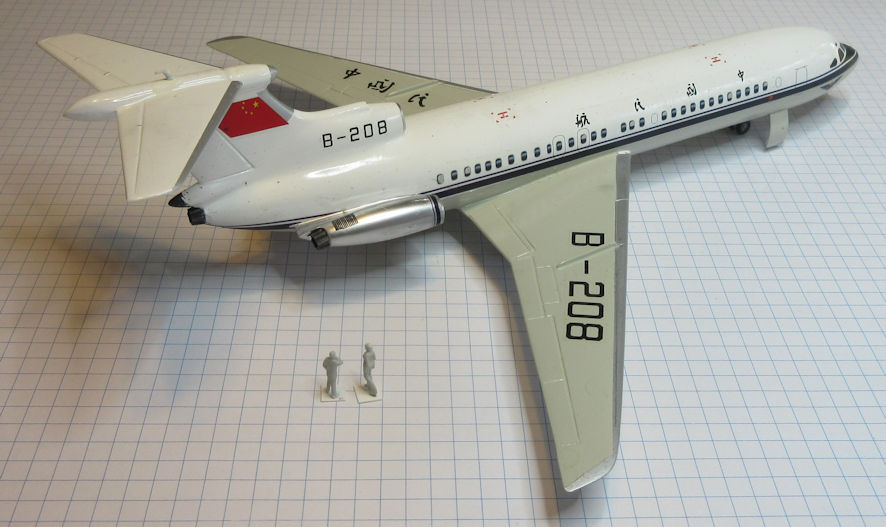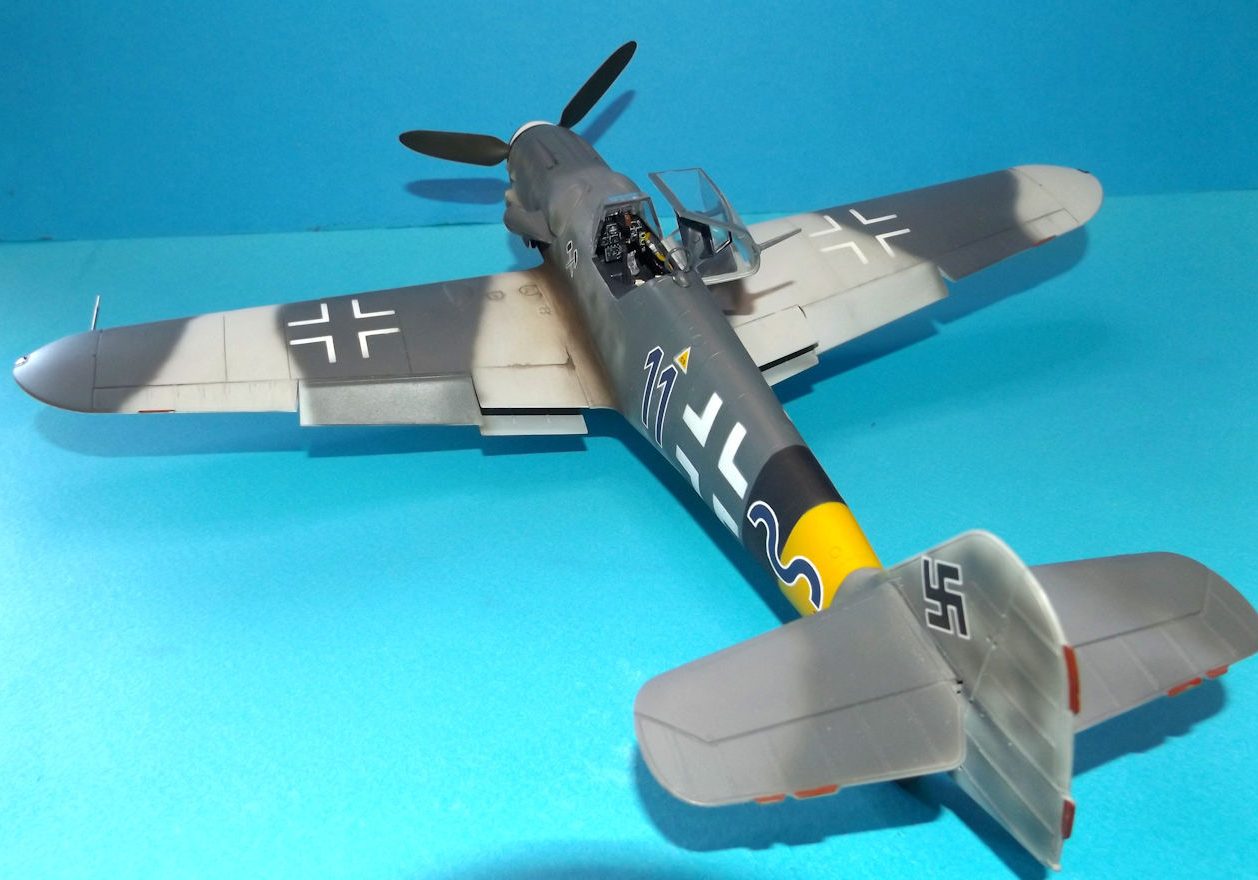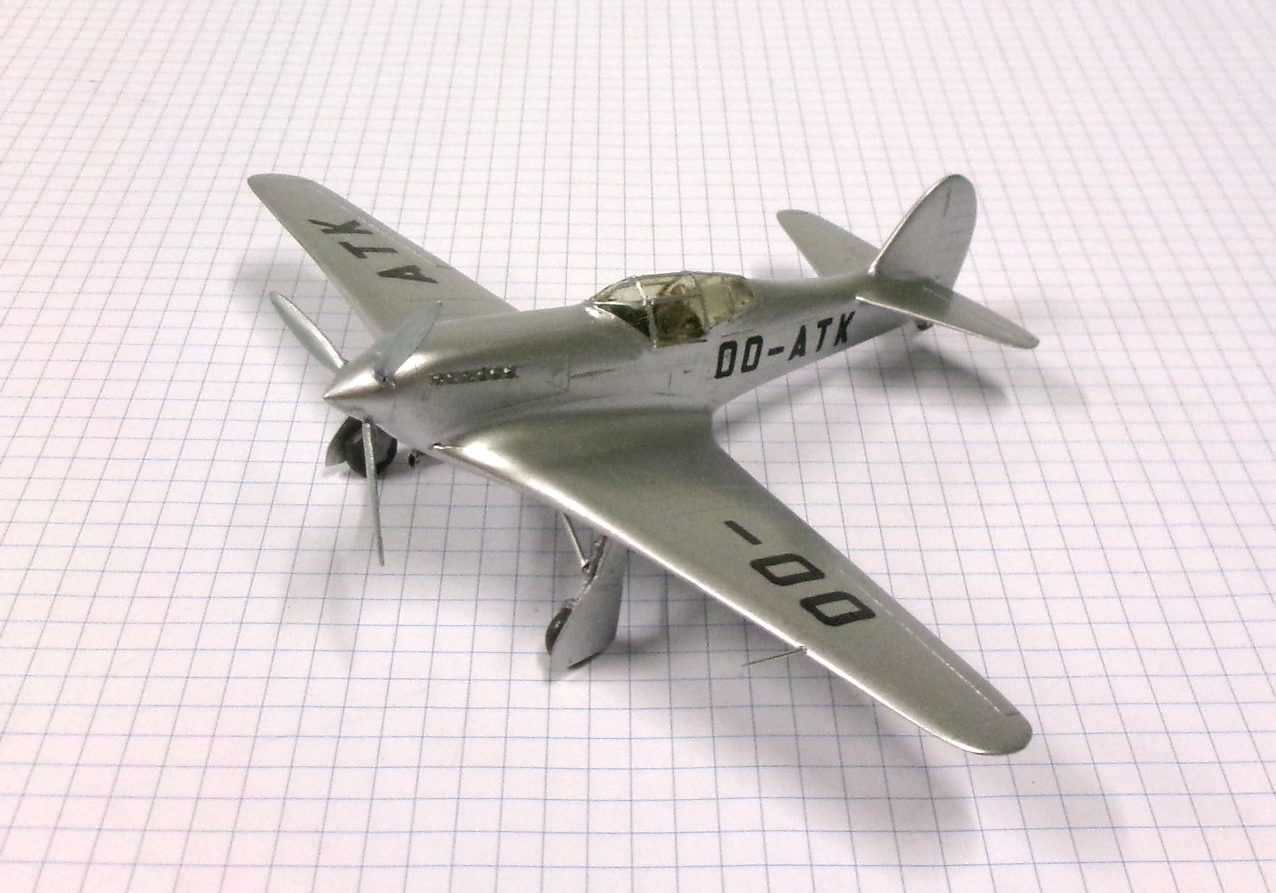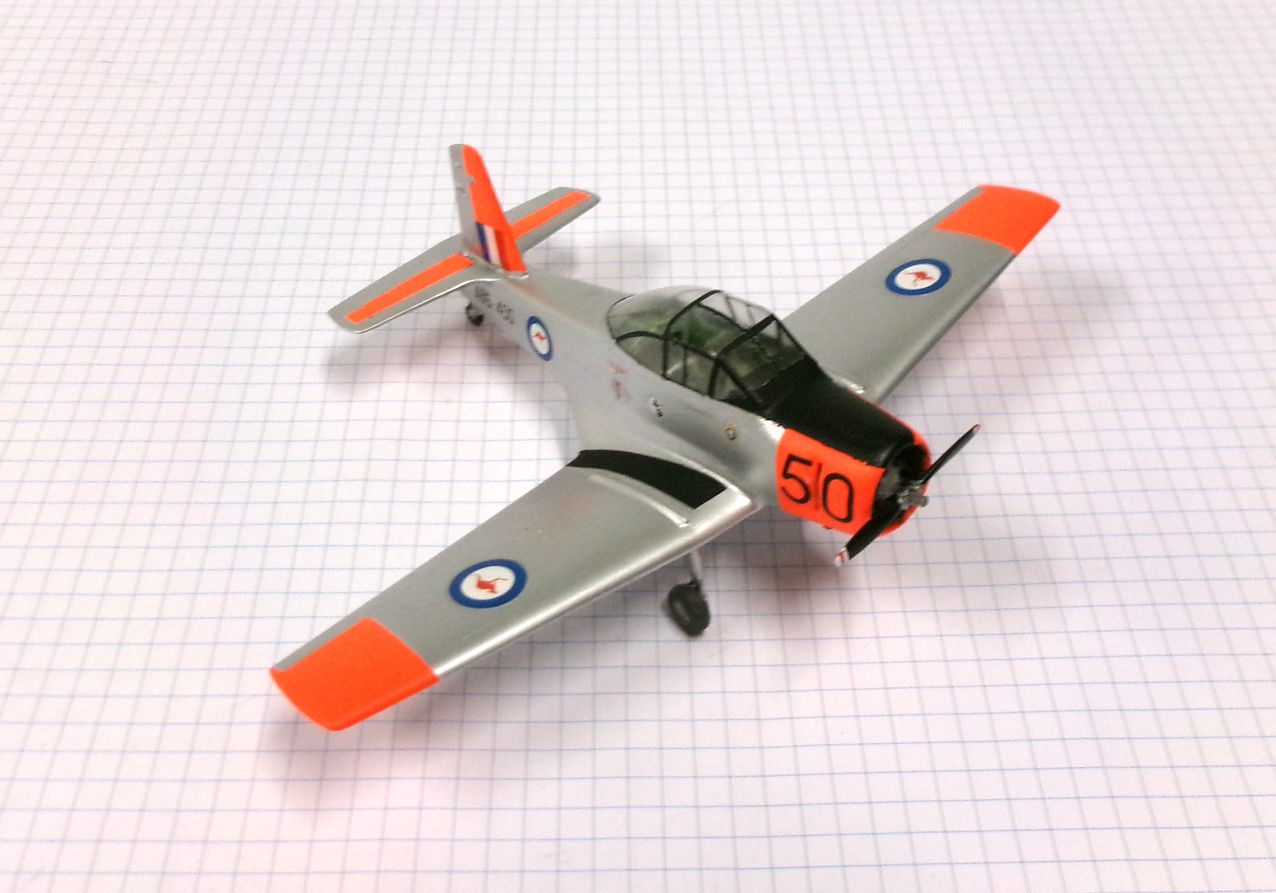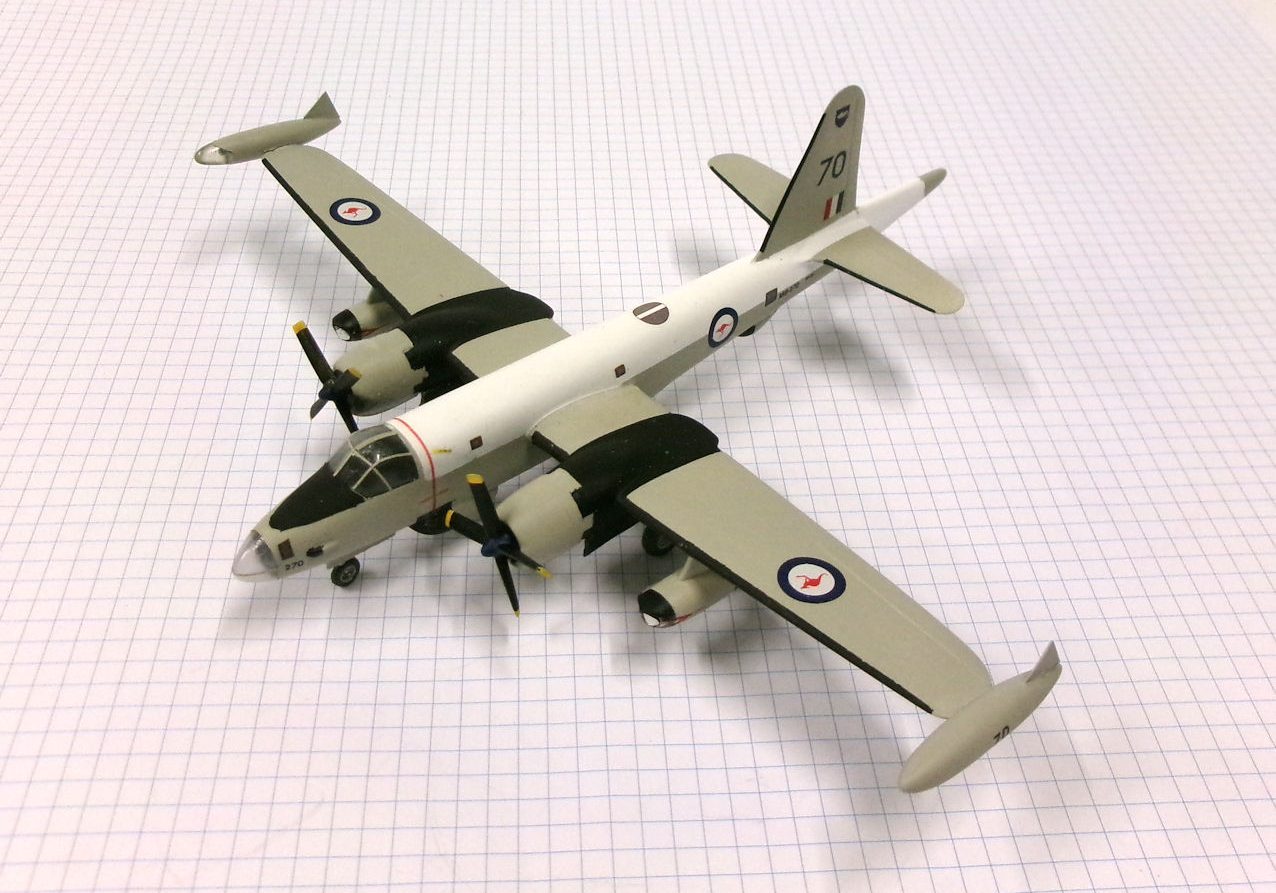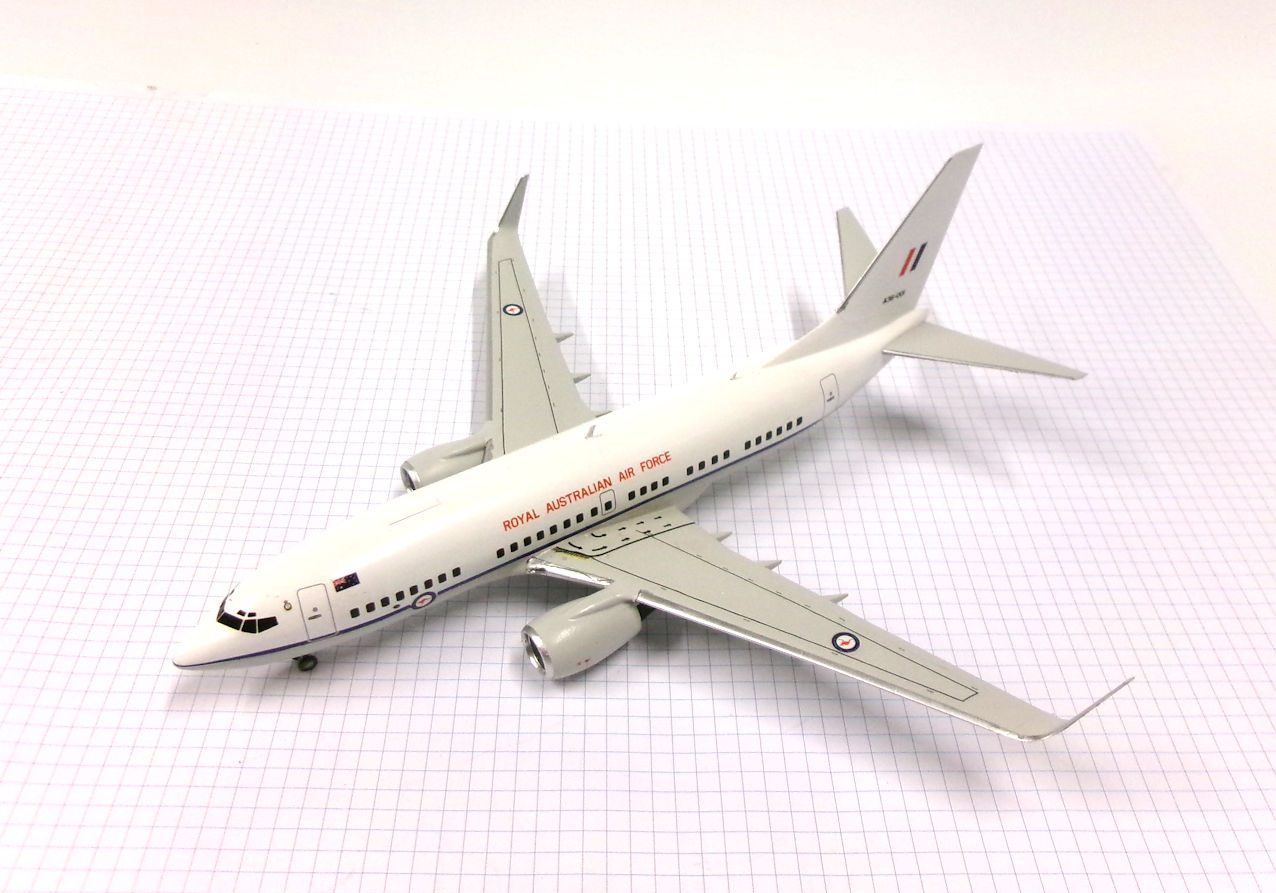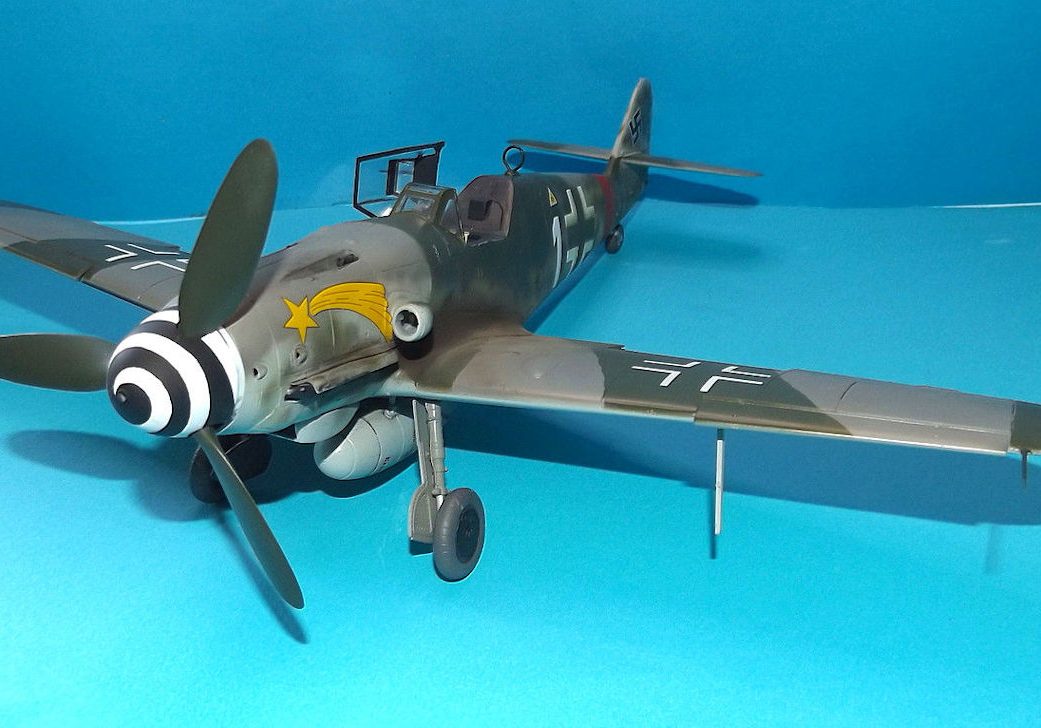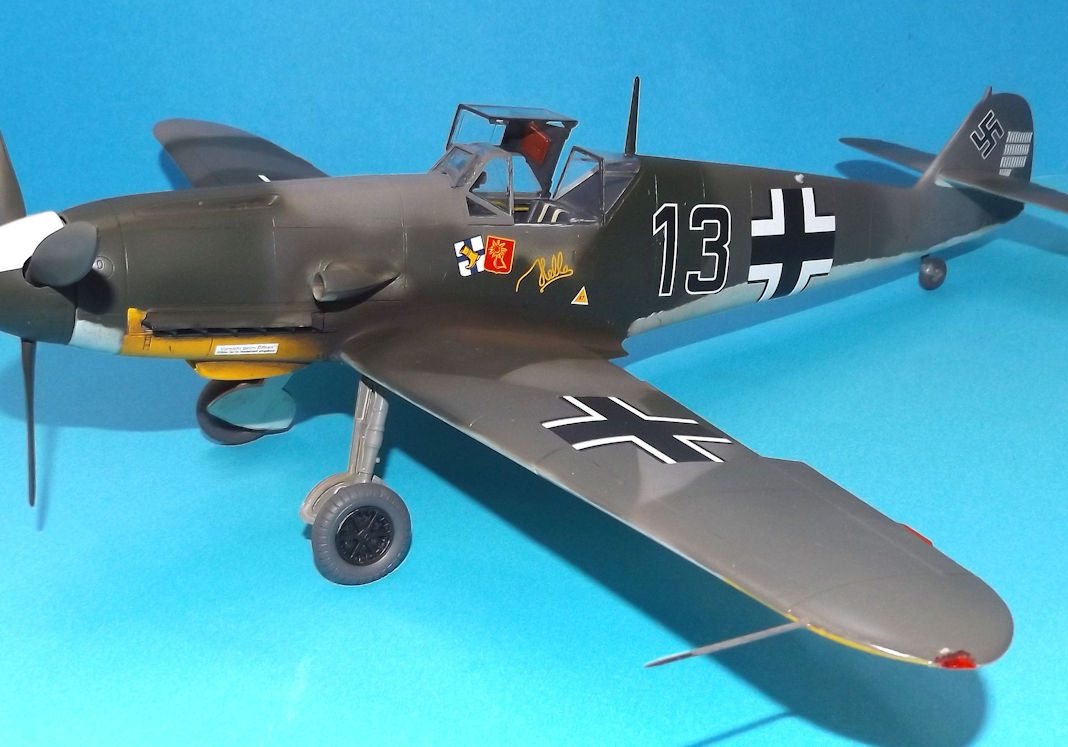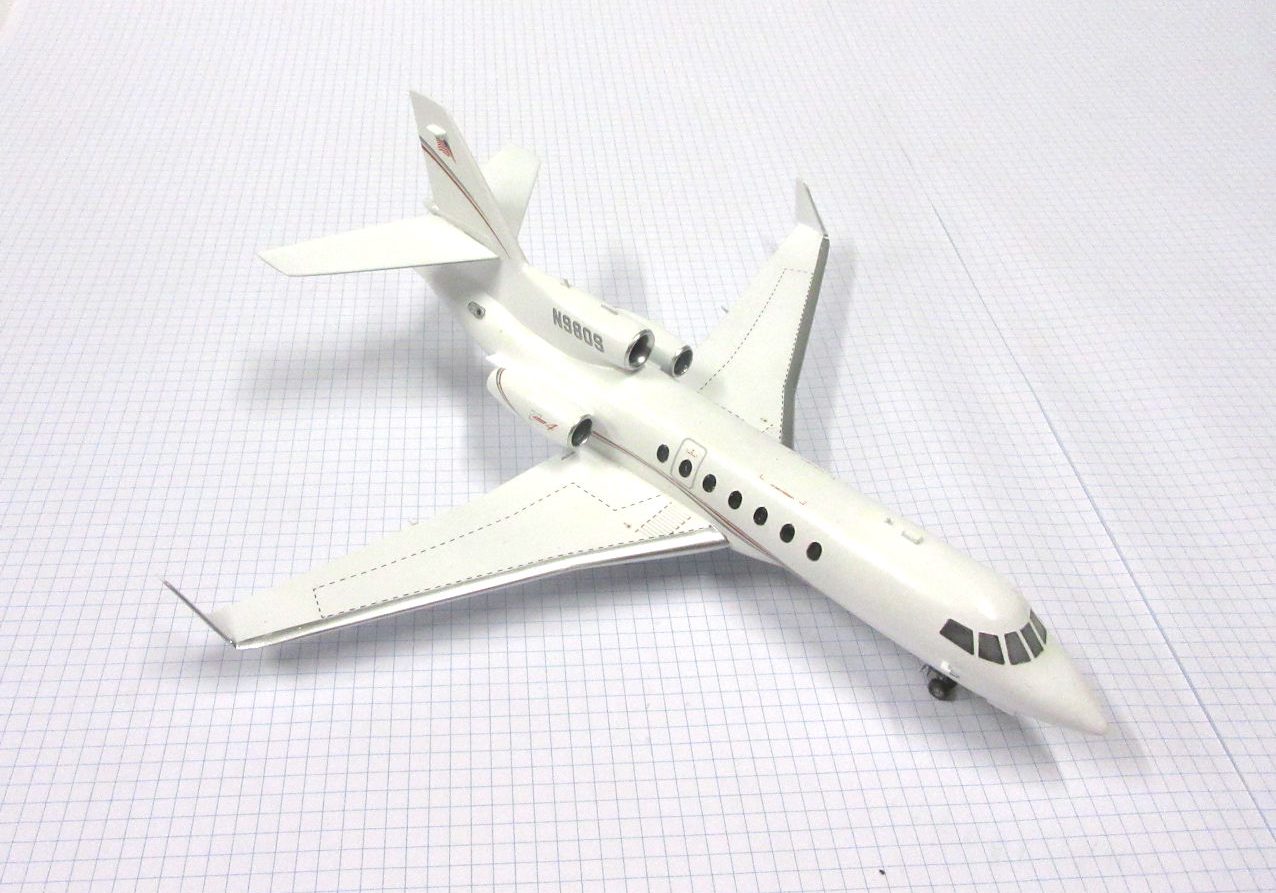History
The Hawker Siddeley Trident was a medium capacity airliner designed in the late 1950s and early 1960s. Despite its potential it suffered from many changes in design requirements and did not achieve great success so only 117 were made.
The Trident began as the deHavilland 121, designed to fulfill a British European Airways (BEA) requirement for a medium jet airliner.
It was the first three-engined jet airliner to be designed and constructed but delays and changes in specifications meant it lost any advantage it may have had against competitors such as the Boeing 727.
The Trident 2E was the second major version of the Trident. If featured a modified wing and more powerful Spey engines, allowing it to carry heavier payloads over longer ranges.
Fifty were made and the largest operator was the Civil Aviation Administration of China (CAAC) which flew thirty-three.
This model represents B-208 flying with the CAAC in May 1979.
Airfix 1/144 kit with TwoSix decals. Completed in April 2012


